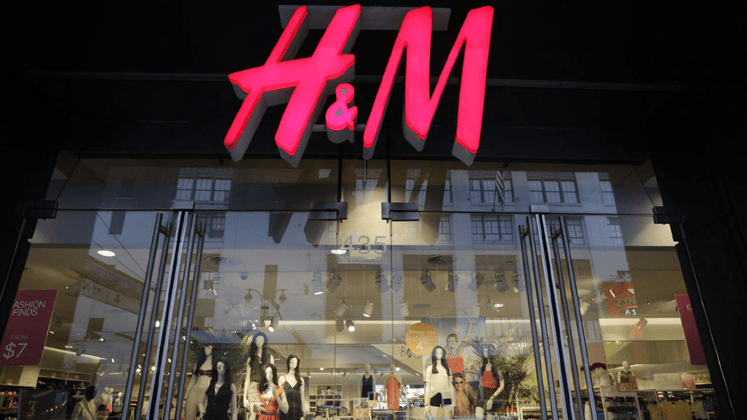Store closures due to Covid; India office consolidation and China controversy were the three major challenges that kept H&M in the limelight in last few months. In fact the retail giant had to face a lot of negative impact due to these reasons.
Recently, the H&M Group came up with its Sustainability Performance Report 2020 in which it says that due to Covid, there was a delay or pause in several of its sustainability-related activities – including garment collection programmes, some projects to scale up innovative business models, finalising its Circular Product Development Guideline and microfibre strategy and carrying out in-person supplier factory assessment.
At the same time, it also says that despite the challenges of the pandemic, it has accelerated its sustainability work on many fronts, including setting new goals, evaluating wage strategy, developing its work on issues such as biodiversity, continuing investments in innovation and trialling and scaling further circular business models. 2020 has been an important milestone in its transparency work.
Despite plenty of challenges in 2020, the retailer has taken many positive steps that include embracing new breakthroughs in fabric recycling technology including the world’s first collection using the mixed-fibre textile recycling Green Machine, and the first commercial products made from Renewcell’s Circulose®.
Interestingly, its sourcing of recycled materials more than doubled to 5.8 per cent in 2020 (2.2 per cent in 2019). It also included few new materials like for H&M brand, it used ‘Renu polyester’ – recycled polyester fibre made from textile waste.
“The COVID-19 pandemic disrupted many of our tests of materials sourced in a more sustainable way. We’ll work to complete these and continue searching for innovative solutions to fill gaps in more sustainable options,” the company says.
Following the closure of its 2013 Fair Living Wage Strategy, the retailer used 2020 to reassess its overall approach to fair jobs and wages. With regard to average monthly wages (excluding overtime) at H&M Group factories versus applicable minimum wages in key production markets like India during 2020, its suppliers’ gross average wage was US $ 126 while minimum wage was US $ 114.
In 2020, the company used 64.5 per cent of materials from recycled or more sustainable sources and there was 14 per cent reduction in packaging, including 24 per cent less plastic packaging. 100 per cent of its cotton was organic, recycled or sourced in a more sustainable way.
Also Read: 2020 was year of sustainability milestones for KappAhl; maximises sourcing from Bangladesh
And all this was possible by working closely with all its stakeholders. The company recovered more quickly than anticipated and continued to accelerate existing work to transform its business, increase its online sales and customer base, invest in sustainability and set ambitious plans for the future.
The company is also continuing to evolve and lead the apparel industry towards a more sustainable future that offers customers more conscious fashion choices. 2020 has brought new urgency to this transformation. The COVID-19 pandemic arrived in the wake of the accelerating climate crisis. The resurgence of the ‘Black Lives Matter’ movement was a stark reminder of the inequity that still exists in the world. And the ongoing political instability continues to create uncertainty about the future.
As aptly stated by Helena Helmersson, CEO, H&M Group, “We stand by our responsible purchasing practices and agreements with suppliers, and are in close dialogue with them in order to support their businesses during these uncertain times. At the same time, H&M Group’s updated wage strategy will take a localised approach to improve working conditions of the people in our supply chain. We’ve had also a big focus on advancing our inclusion and diversity work this year – including new partnerships, increased transparency and improving representation across the business.”
Looking forward
- New goal of using 30 per cent recycled materials by 2025
- New sustainably-driven marketplace Itsapark, launching online for Germany in Spring 2021, inspiring conscious fashion, beauty and lifestyle choices
- Looking to expand resell customer options in 2021
- In 2021, H&M brand will roll out the Circular Product Development Guideline across its product assortments, while the other H&M Group brands will test the guideline and determine how to integrate it into their creative processes
- The brand will develop and scale additional tools that support circular design decisions. For example, it will continue to scale use of 3D software to prototype designs and test pattern cutting optimisation with ARKET and Monki. Optimising pattern cutting has huge potential for minimising production waste.
Missed
In 2020, 85 per cent of facilities had their own operations with water-efficient equipment while the target was to reach 100 per cent by 2020. However, presently the situation remains the same.
More women
Overall, there are 74 per cent women in the H&M Group (71 per cent in management position and 76 per cent in board of directors). As far as the number of women workers in the Tier-1 production supply chain in 2020 was concerned, 63 per cent workers and 24 per cent supervisors were female.
Specific to India
The report also talks about wages during lockdown in 2019 and says that when there was full lockdown from the end of March until mid-May, the compensation to workers was set — following a Supreme Court judgment — on the basis of factory-level negotiations between employers and worker committees or recognised trade unions.
It further adds that approximately 30 per cent of its suppliers’ factories set compensation at 100 per cent of the minimum wage; approximately 5 per cent at between 50 per cent and 100 per cent; approximately 40 per cent at 50 per cent and the remaining 25 per cent at below 50 per cent. Overall, the gross average wage in the first six months of 2020 was above the minimum wage (with the exception of April), although the premium paid was generally lower than in 2019.
The company launched a supplier programme in India to remove potential obstacles to invest in low carbon technology. WWF is partner in this programme.
In association with Organic Cotton Accelerator and other organic cotton initiatives, the retailer supported 13,000 farmers involved in organic cotton projects and US $ 1.15 million in premiums received by farmers, supporting investment in organic farming.
H&M also worked with Indian spinning mills and addressed potential human rights and child labour risks at spinning mills in Tamil Nadu, India. “In 2020, our work with the Amsterdam Coalition (AMCO) on responsible sourcing from India included contributing to the OECD’s baseline risk assessment. Alongside ongoing global collaboration, we engaged with the Tamil Nadu Alliance – a new civil society forum representing local organisations in Southern India,” the report says.
In the very beginning of this report, H&M writes that its vision is also to encourage others to democratise fashion openly and transparently report on its own progress and challenges. It will not be wrong to expect that every stakeholder will be motivated and geared up to contribute towards sustainability, no matter at whatever level it is. Are you? And if yes, what is your plan to become sustainable?







